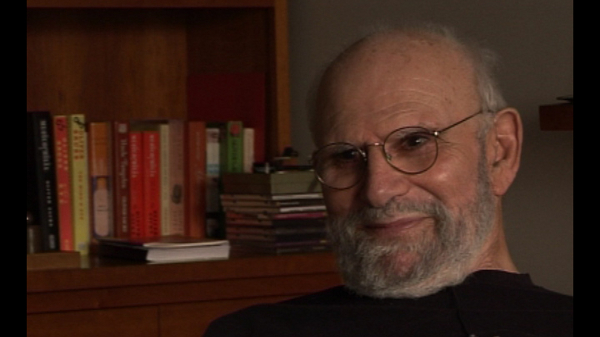NEXT STORY

The need for love
RELATED STORIES

NEXT STORY

The need for love
RELATED STORIES


|
Views | Duration | |
|---|---|---|---|
| 351. Does the treatment of schizophrenics alter onset of schizophrenia? | 753 | 03:49 | |
| 352. Over-investment in medical models of schizophrenia | 513 | 02:20 | |
| 353. The need for love | 1 | 824 | 02:08 |
| 354. Loving and being 'in love' | 1 | 876 | 01:26 |
| 355. 'Perhaps it's more important to love than be loved' | 1 | 683 | 01:18 |
| 356. Drug episodes in Hallucinations | 416 | 00:46 | |
| 357. My craziest hallucination | 1 | 499 | 02:05 |
| 358. The 'academic spider' hallucination | 434 | 01:09 | |
| 359. The story of Migraine and amphetamines | 1 | 476 | 04:54 |
| 360. 'I am just a chronicler and a describer' | 1 | 325 | 01:06 |

I think we are very over-invested in medication and medical models of schizophrenia, although as a neuroscientist, I am very well aware of what may be going on in the schizophrenic brain, but I’m equally aware of the power of community, of work, of friendship, and... and of love, combined with... with the right medication and perhaps the right sort of psychotherapy. I think places like Gould Farm, and what’s it called, the North Carolina, Riis?
[Q] CooperRiis.
And, oh, an extraordinary place called CooperRiis, which we visited in North Carolina. I think these represent deep hopes, and should be... and should be very much supported. I don’t think all the money should be poured into the pharmaceutical and physiological research. I think it’s very important to have this communal support as well. I mean, in a completely different way, one sees how miserable and isolated one deaf man is, but if you have a deaf community, it’s totally different. And... the... also in Gould Farm, but also in some of the state hospitals, one must find another identity, a real identity other than being a patient, a schizophrenic. You... you have to be a writer, a – whatever it is – a meteorologist, a carpenter, you need a social role, and one which you’re good at, and one which will be recognised. And I fear this was never the case for my brother Michael – it should have been the case. He was a gifted man, sensitive, loving, he should have had a much better life, and perhaps one day I will write about these things.
Oliver Sacks (1933-2015) was born in England. Having obtained his medical degree at Oxford University, he moved to the USA. There he worked as a consultant neurologist at Beth Abraham Hospital where in 1966, he encountered a group of survivors of the global sleepy sickness of 1916-1927. Sacks treated these patients with the then-experimental drug L-Dopa producing astounding results which he described in his book Awakenings. Further cases of neurological disorders were described by Sacks with exceptional sympathy in another major book entitled The Man Who Mistook His Wife For A Hat which became an instant best seller on its publication in 1985. His other books drew on his rich experiences as a neurologist gleaned over almost five decades of professional practice. Sacks's work was recognized by prestigious institutions which awarded him numerous honours and prizes. These included the Lewis Thomas Prize given by Rockefeller University, which recognizes the scientist as poet. He was an honorary fellow of both the American Academy of Arts and Letters and the American Academy of Arts and Sciences, and held honorary degrees from many universities, including Oxford, the Karolinska Institute, Georgetown, Bard, Gallaudet, Tufts, and the Catholic University of Peru.
Title: Over-investment in medical models of schizophrenia
Listeners: Kate Edgar
Kate Edgar, previously Managing Editor at the Summit Books division of Simon and Schuster, began working with Oliver Sacks in 1983. She has served as editor and researcher on all of his books, and has been closely involved with various films and adaptations based on his work. As friend, assistant, and collaborator, she has accompanied Dr Sacks on many adventures around the world, clinical and otherwise.
Tags: CooperRiis, Gould Farm, Massachusetts, North Carolina
Duration: 2 minutes, 20 seconds
Date story recorded: September 2011
Date story went live: 02 October 2012